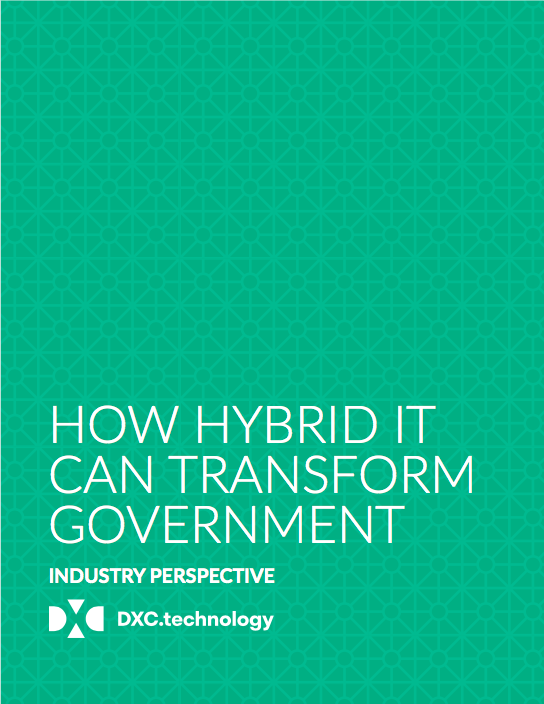How Hybrid IT Can Transform Government
Today, it’s not enough to operate in a digital environment. The role of an IT services organization is evolving from “IT shop” to mission partner, aligning technology with agency goals.
Presented by
Perspecta Inc.

Effective June 1, 2018, DXC U.S. Public Sector became part of Perspecta Inc.
No one can deny that the technological environment in which the federal government operates is wildly different today than it was even a few years ago. Citizens now expect instant access to vast troves of data and information — and the government must keep pace. In fact, the federal government maintains and operates one of the largest information technology infrastructures in the world, requiring constant attention to performance, efficiency and cost.
Public-sector IT is at a crossroad. In the past, it was considered forward thinking when government agencies digitized paper records, launched web sites and conducted business in an all-digital environment. Servers, computers and systems sprung up in an ad hoc, as-needed way. As a result, many agencies’ IT departments are decentralized, with multiple data centers and siloed system architectures that operate independently. This makes it impossible to extract the value of a department’s total efficiency and performance because it lacks collective oversight into its systems.
The real job at hand is to leverage all of the available platforms and service options to fundamentally change how government operates and interacts with its citizenry and workforce. Just as Uber has changed the way consumers hail a taxi, a hybrid IT approach can transform the way government delivers services.
Today, it’s not enough to operate in a digital environment. The role of an IT services organization is evolving from “IT shop” to mission partner, aligning technology with agency goals. Infrastructure alone is no longer the objective. IT leaders must reevaluate their primary business goals while containing costs, increasing performance, ensuring security and providing a flexible environment that allows for rapid changes in application development.
Although taxpayers expect services at the swipe of anger, government IT leaders can’t update their systems so quickly. They have two major concerns when it comes to modernizing their infrastructure and taking advantage of tools such as cloud computing. The first is controlling costs, such as costs of the data centers and cloud service providers that have sprung up in the past couple of decades. The second is to look end-to-end across all assets and figure out how to maximize their use in a flexible, cost-effective way.
But there is a path forward to make government responsive and efficient. Government chief information officers need to look to the hybrid IT model to transform how government operates, solving critical problems while meeting the requirements to satisfy both mission and budget.
Read the full paper to learn more about how government should meet existing infrastructure management challenges while satisfying the broad requirements of their user base.
This content is made possible by our sponsor. The editorial staff of Government Executive was not involved in its preparation.




